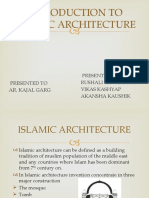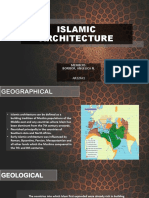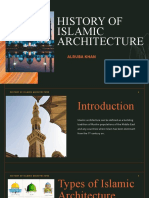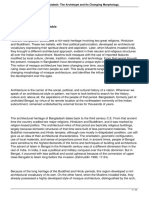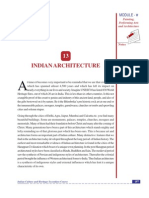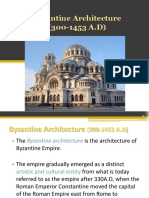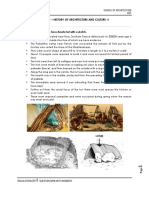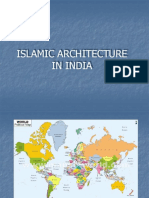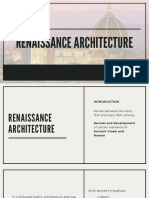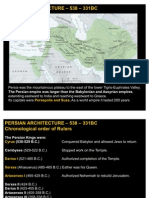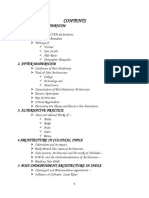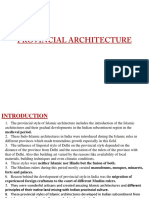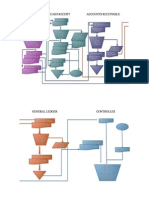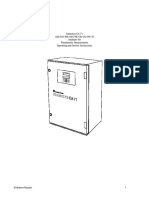0% found this document useful (0 votes)
170 views15 pagesIntro to Islamic Architecture
This document provides an overview of early Islamic architecture from 700AD onwards. It discusses the key building types of mosques, tombs, palaces and forts that formed the basis of Islamic architectural vocabulary. The earliest mosques were simple structures made of mud and palm leaves, like the Prophet Muhammad's mosque in Medina. Over time, hypostyle plans with roofing supported by columns became common for mosque prayer halls. The document also outlines 10 defining elements of Islamic architectural style and discusses the spread of architecture across the Islamic caliphates from the 7th century onwards.
Uploaded by
Saad HafeezCopyright
© © All Rights Reserved
We take content rights seriously. If you suspect this is your content, claim it here.
Available Formats
Download as PPT, PDF, TXT or read online on Scribd
0% found this document useful (0 votes)
170 views15 pagesIntro to Islamic Architecture
This document provides an overview of early Islamic architecture from 700AD onwards. It discusses the key building types of mosques, tombs, palaces and forts that formed the basis of Islamic architectural vocabulary. The earliest mosques were simple structures made of mud and palm leaves, like the Prophet Muhammad's mosque in Medina. Over time, hypostyle plans with roofing supported by columns became common for mosque prayer halls. The document also outlines 10 defining elements of Islamic architectural style and discusses the spread of architecture across the Islamic caliphates from the 7th century onwards.
Uploaded by
Saad HafeezCopyright
© © All Rights Reserved
We take content rights seriously. If you suspect this is your content, claim it here.
Available Formats
Download as PPT, PDF, TXT or read online on Scribd
/ 15
